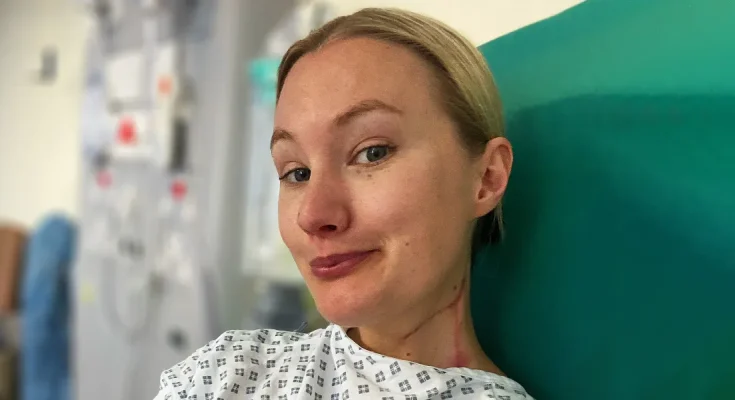When a London woman noticed a dark spot on her scalp, a specialist dismissed the possibility of melanoma. Another diagnosed it as a fungal infection. By the time someone took her concerns seriously, the life-threatening disease had already spread to her skull.
Sarah Lee knew her body. So when a dark mole suddenly appeared on her scalp, she didn’t ignore it. She went to the doctor. But instead of answers, she was dismissed. Not once, but three times.
I always wanted to be on the cover of a magazine …
I never thought it would be because I have melanoma! 🤯
Here’s my goofy smile on the cover of @people spreading awareness of the importance of getting your skin checked and that melanoma can happen to anyone! #melanoma pic.twitter.com/iayKPVkEfW
— Sarah Lee (@sarahkatelee_) November 7, 2022
What unfolded next was a startling reminder of how easily warning signs can be overlooked and how deeply trust in medical judgment can falter. At just 29, Sarah was about to discover the harsh reality behind her instincts and the silent threat hiding in plain sight.
Lee’s concern deepened with each passing week, and she returned to her general practitioner to report the changes.
Yesterday I faced my fear of bees …http://t.co/H8zp3uX74y pic.twitter.com/3pYoN2TZQE
— Sarah Lee (@sarahkatelee_) March 24, 2015
It was the summer of 2021 when Lee took a photo of her scalp, not out of concern, but to check if she needed highlights. Pandemic disruptions had made salon visits rare, and she wanted to see how much her hair had grown out.
In the photo, she spotted something unfamiliar: a pea-sized, black mole nestled in her fine blonde hair. She was sure it hadn’t been there before. The next day, she called her general practitioner.
Miss these days. Christmas 2004 pic.twitter.com/G8pm8q1oIb
— Sarah Lee (@sarahkatelee_) December 24, 2013
Lee was then referred to a dermatologist who examined the mole using a dermatoscope, a handheld device used to inspect skin lesions.
After the assessment, Lee was told three things: that the mole didn’t look suspicious, that she was too young for skin cancer, and that it was nearly impossible to develop melanoma on the scalp because the hair protects from ultraviolet radiation. None of those statements was accurate.
Lovely Christmas dins pic.twitter.com/3Jn7FCDRYl
— Sarah Lee (@sarahkatelee_) December 25, 2013
Over the next five months, the mole began to change. It grew in size, darkened, and multiplied. Lee’s concern deepened with each passing week, and she returned to her general practitioner to report the changes. This time, the lesion was visibly different.
Had the best weekend with my girls 🎉🎉 #birthday #Cardiff pic.twitter.com/FTGNpydeXi
— Sarah Lee (@sarahkatelee_) October 11, 2015
It was blue-black and spreading. Still, her concerns were dismissed. The doctor told her the growth was a fungal infection and would go away on its own. No further action was taken.
Lee knew something wasn’t right. She had already been told the mole was harmless, but what she was seeing and feeling told her otherwise.
So excited for Berlin already! @EloiseOlivia #myfaveplace pic.twitter.com/94aG4KUP
— Sarah Lee (@sarahkatelee_) November 27, 2012
Frustrated and unsettled, Lee decided to push for a second opinion. She arranged to see a different doctor in December 2021. This time, her concerns were met with urgency. The new dermatologist examined the spots on her scalp and responded immediately:
“I’m glad you came. I’m really concerned about these spots on your head.”
Without delay, the moles were removed and sent for biopsy. After the procedure, Lee had a sizeable scar across her scalp, but no clear answers yet. As the holidays approached, she entered a stretch of waiting that was marked by rising anxiety.
It’s been one whole year since I got called for an urgent MRI scan. I hadn’t had my biopsy results yet .. so you can imagine the fear. My (now) cancer nurse had to jump through hoops to tell me my diagnosis over the phone – stage 3 malignant melanoma with multiple satellites. pic.twitter.com/6PQ31mQJTx
— Sarah Lee (@sarahkatelee_) January 8, 2023
In early January 2022, Lee received a call from a nurse with the results of her biopsy. The diagnosis was stage three malignant nodular melanoma, and it had already reached her skull. The news left her stunned and she nearly collapsed after the call.
Lee didn’t use tanning beds, she always wore SPF 30 sunscreen, and she had grown up in Wales, where, as she put it, “it almost always rains.” The diagnosis raised questions such as: How much time did she have left? Would she lose her hair? Why had three separate doctors told her she had nothing to worry about?
I was browsing through old pics and I’m still SO shocked doctors didn’t think this was worrying👇🏻🤯
First pic – July 2021 after spotting new mole: GP/ Derm said it was normal.
Second pic – Nov 2021: GP said it was fungus and would go away.
Jan 2022: Stage 3 malignant melanoma pic.twitter.com/zS96FZG8xW
— Sarah Lee (@sarahkatelee_) August 5, 2022
Melanoma is the most invasive type of skin cancer and carries the highest risk of death. It accounts for only about 1 percent of all skin cancer diagnoses but causes the majority of skin cancer-related fatalities.
In Lee’s case, the diagnosis was stage three malignant nodular melanoma, known for growing deeper into the skin more rapidly than other types. This type of cancer begins in the melanocytes, the cells responsible for skin pigment, and is known to spread rapidly into surrounding tissue, lymph nodes, and organs.

Early detection significantly increases the chances of survival, but the disease becomes more difficult to treat once it spreads beneath the surface. However, melanoma can be difficult to detect, especially when it appears in places like the scalp.
Many cases begin as moles or dark patches that change over time. A major risk factor for melanoma is ultraviolet radiation, also known as UV radiation. These are invisible rays that come from the sun and artificial sources, such as sun lamps and tanning beds.
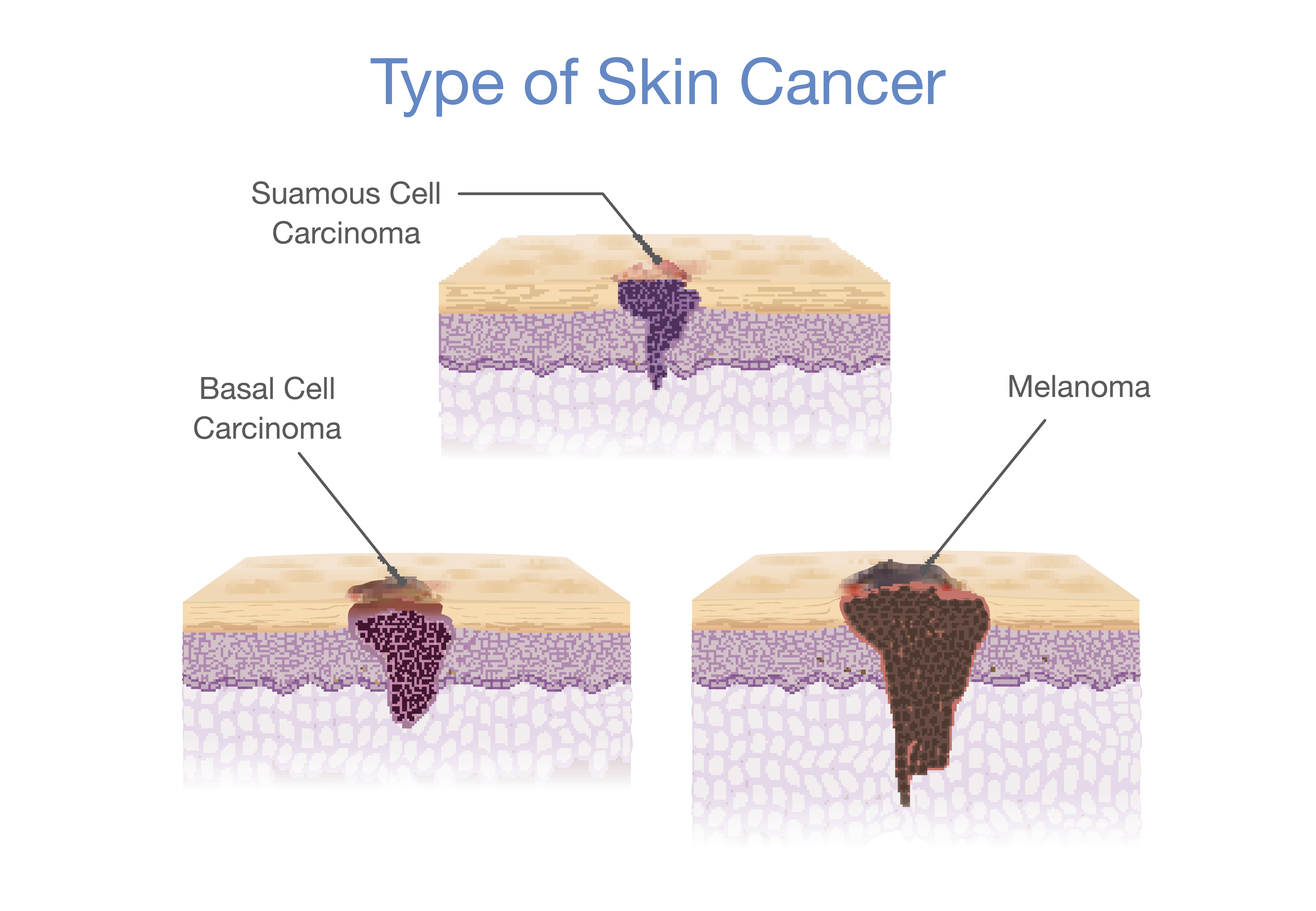
Two types of UV rays reach the Earth’s surface: UVA and UVB. Both can damage skin cells, accelerate aging, and increase the risk of melanoma and other skin cancers. UV exposure can also harm the immune system and the eyes.
Medical experts recommend broad-spectrum sunscreen, which protects against both UVA and UVB rays. UV radiation is also used in controlled medical settings to treat conditions such as psoriasis, vitiligo, and skin-related lymphomas. However, outside of those settings, unprotected exposure poses serious health risks.
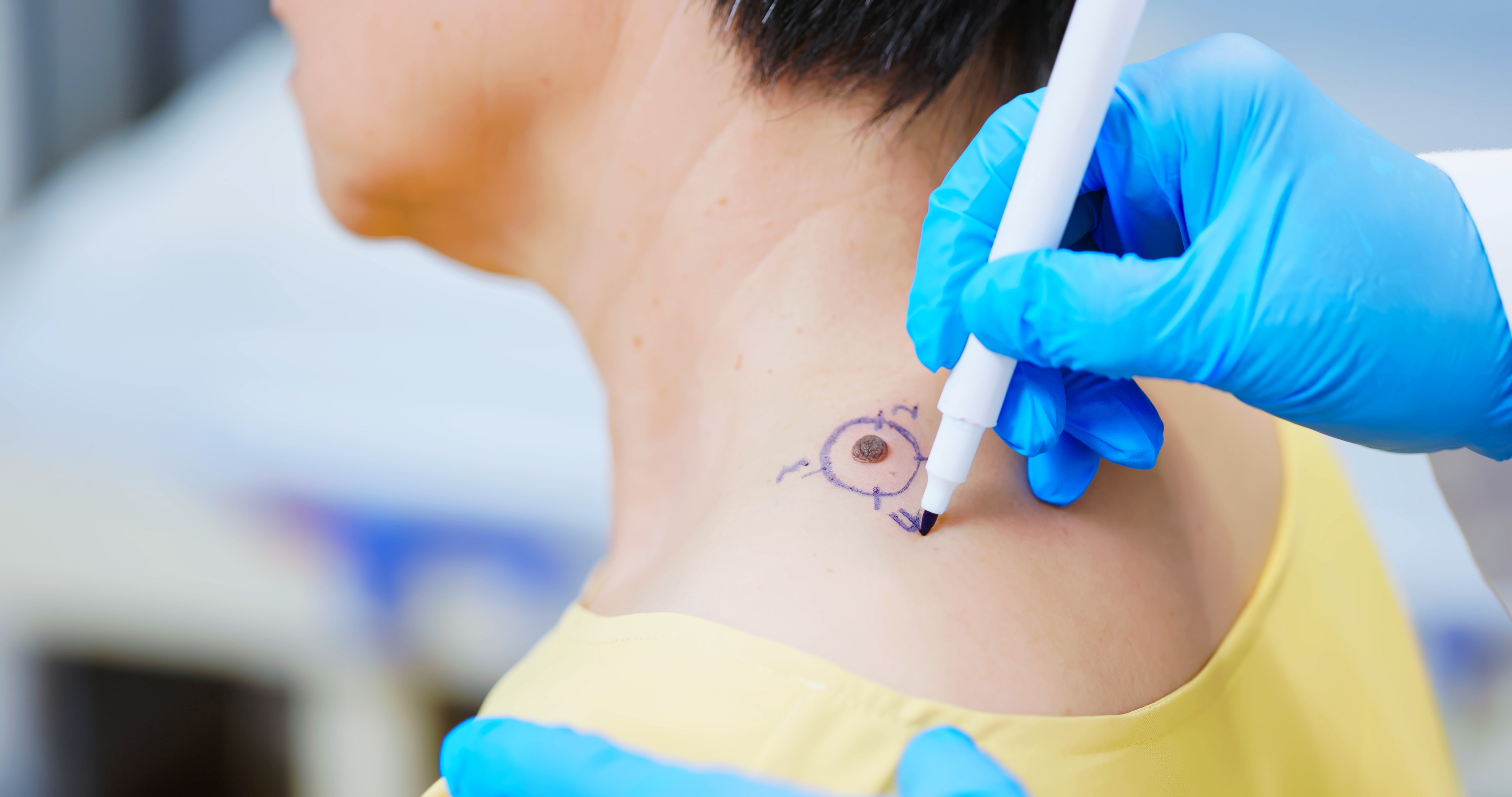
Although Lee didn’t use tanning beds and consistently wore SPF 30, she had several risk factors: fair skin, light hair, and a mole that appeared in a difficult-to-monitor area. Melanoma often starts as a new or changing mole, and dermatologists advise using the “ABCDE” system to help identify warning signs:
Asymmetry — one half of the mole doesn’t match the other
Border — edges are ragged or uneven
Color — multiple or uneven shades
Diameter — larger than 6 millimeters
Evolving — any change in size, shape, or color
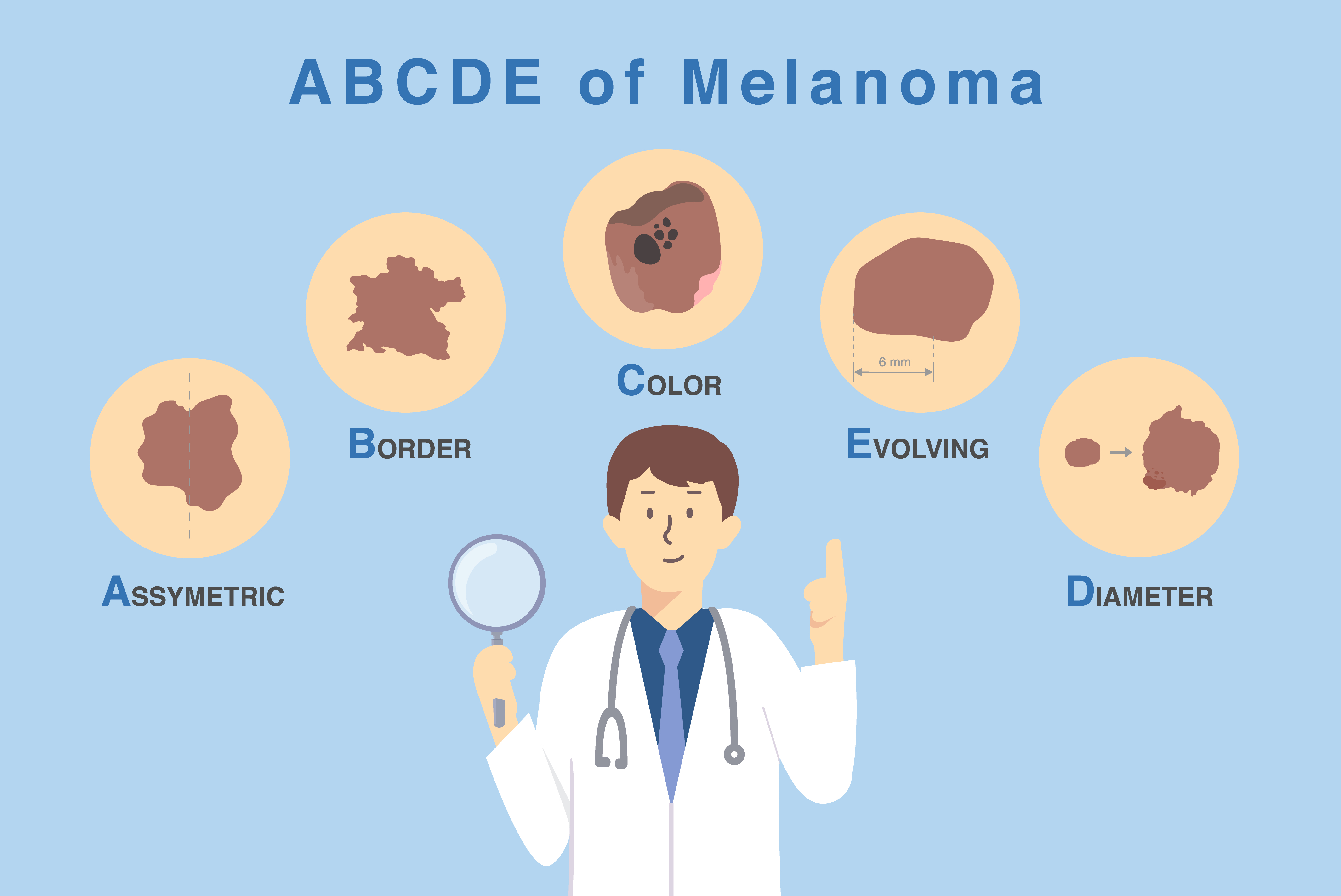
Some melanomas don’t fit these criteria. A separate guideline known as the “ugly duckling” sign urges people to look for any spot that stands out from the rest. With the diagnosis confirmed, she was sent for a series of scans — CT, MRI, and PET — to find out whether the cancer had spread beyond the skin and bone.
Lee experienced nausea, vomiting, fever, fatigue, and rashes, sometimes all at once.
The scans revealed that the cancer had already reached a lymph node on the left side of Lee’s neck. Treatment would require a radical dissection, an extensive surgical procedure to remove all of the lymph nodes and surrounding tissue in the affected area.
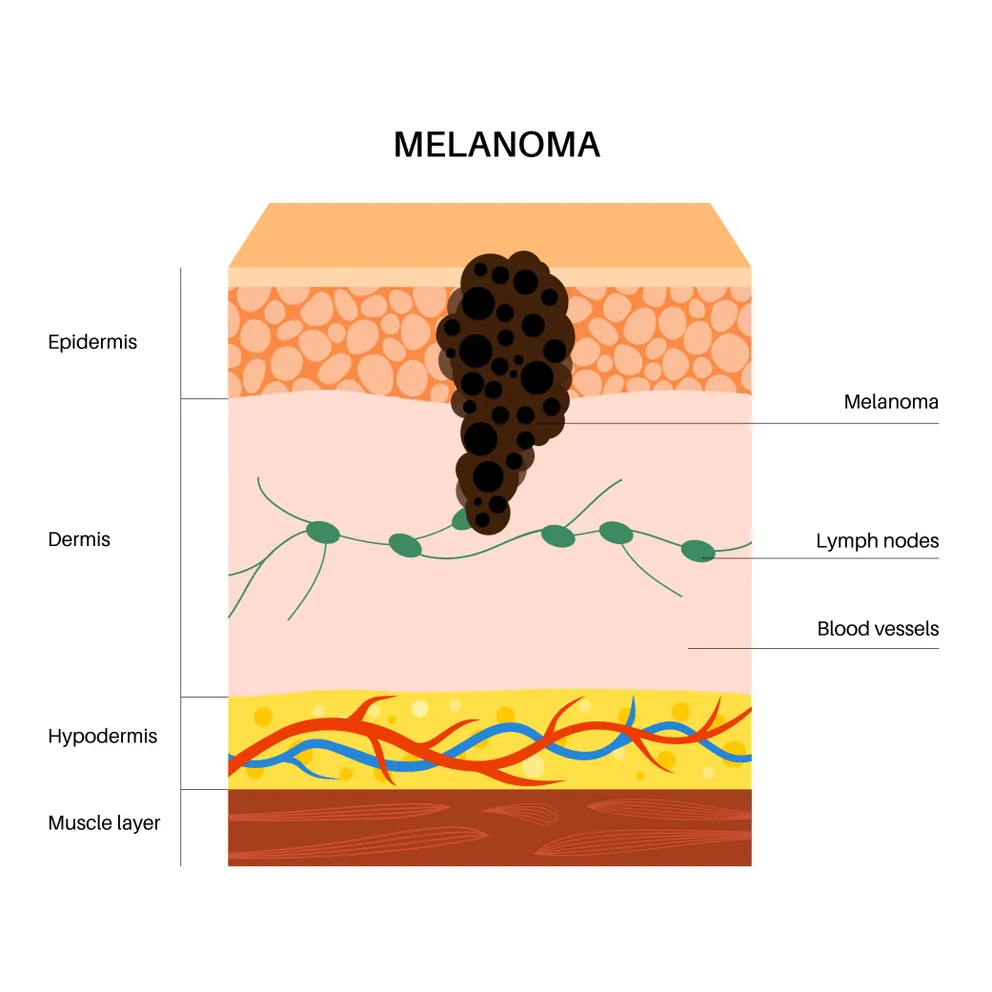
The word “dissection” stuck with her, bringing back a memory from school when she had to cut into a sad-looking fish during a Year 11 biology class. Now, she would be the one on the table. The operation was scheduled for March 11, 2022, at the Royal Free Hospital in Hampstead and would take eight hours.
When it was over, Lee was sent home with a surgical drain to collect blood and fluid from the site. She carried it with her for two weeks as she began a slow and painful recovery. Follow-up scans showed no visible signs of remaining cancer. However, treatment wasn’t over.
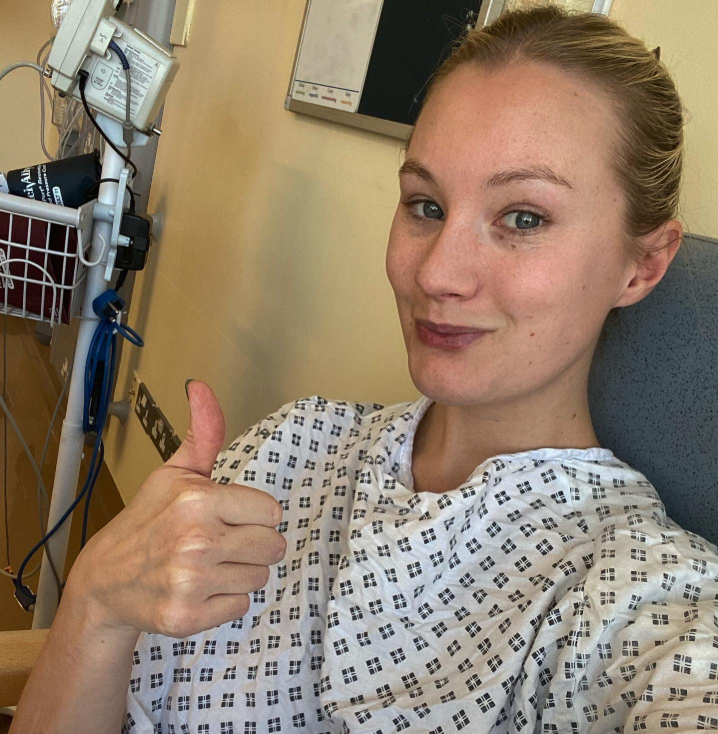
To reduce the risk of recurrence, Lee began a 12-month course of targeted therapy: dabrafenib and trametinib. The drugs are designed to block cancer growth at the molecular level and are commonly used in advanced melanoma cases with specific mutations.
The side effects were immediate and severe. Lee experienced nausea, vomiting, fever, fatigue, and rashes, sometimes all at once. The regimen was grueling but necessary. Taking the medication gave her a 75 percent chance of keeping the cancer from returning.
🚨Please check your moles, trust your gut and get a second/third/fourth opinion.
I was diagnosed with stage 3 melanoma (skin cancer) after a GP insisted a new mole on my scalp was fine … it wasn’t.
If in doubt cut it out. 🎗 pic.twitter.com/7QyyXNLvPk
— Sarah Lee (@sarahkatelee_) January 15, 2022
Her life adjusted to a new rhythm of medications, blood tests, and constant monitoring. The physical symptoms were only part of it. The mental weight of the diagnosis and everything that had led to it had not lifted.
The psychological aftermath set in quietly but firmly. From someone who had once enjoyed the sun, Lee now avoided it completely. From someone who trusted medical advice without hesitation, she had grown fearful of accepting any diagnosis at face value.
Took a while to put my story into words. But here it is, gory pics n’all 😫
Jokes aside, PLEASE don’t underestimate the damage the sun can do.
Wear SPF, a hat, stay in the shade and get your moles checked. 🎗 https://t.co/lGpQBffw0U
— Sarah Lee (@sarahkatelee_) August 12, 2022
The illness had changed more than her body. It had altered how she moved through the world. She later wrote:
“I am terrified of the cancer coming back. And I’m angry it could have been spotted sooner.”
Even as her body healed, anxiety lingered over every scan, every check-up, every new mark on her skin. The threat no longer felt theoretical. It had already happened once. As Lee continued treatment, she began sharing her experience publicly.
Melanoma update: One lymph node out of 24 from my neck was positive for melanoma – BUT my body got rid of it itself 🤯
Scans are all clear and I begin treatment tomorrow.
May have some nasty side effects but for now it’s looking good. 🙌
So grateful for the NHS 💙 #melanoma pic.twitter.com/Sd8kTUw40G
— Sarah Lee (@sarahkatelee_) April 14, 2022
In interviews and personal writing, she emphasized that melanoma is often misunderstood. “People see skin cancer as the nicer or lesser cancer,” she said. “But when it gets to your organs, it can spread like wildfire. It can hide and lay dormant and come back years later.”
She also pushed back against the idea that a tan signals health. “Any kind of tan is unhealthy,” she commented. “Any changes in the color of your skin due to the sun is skin damage which increases your risk of skin cancer. Left untreated, this can spread to your vital organs and be a lot harder to treat. It’s really not worth it.”
Back on the table for another surgery 🤯. (This is my fourth since being diagnosed).
I had some freckles appear on my scar site so I had them off to test for melanoma recurrence.
A reminder there’s no quick fix for skin cancer, as some may think … #checkyourskin #melanoma pic.twitter.com/GVuD2dDloS
— Sarah Lee (@sarahkatelee_) April 29, 2022
Lee also turned to social media to reach others who might be at risk. On January 15, 2022, just days after receiving her diagnosis, she posted, “Please check your moles, trust your gut, and get a second/third/fourth opinion.”
Her posts drew attention to something she now repeats often: early detection can be life-saving, and persistence can make the difference between a delayed diagnosis and timely treatment. Her message is especially urgent for anyone with fair skin or hard-to-see areas like the scalp, where melanoma can develop unnoticed.
My wound is healing nicely but I still have a lot of pain and swelling. The feeling in my ear is gradually coming back but a lot of my left side is still quite numb.
Just a reminder that a dodgy mole can lead to this.👇🏻
Please check your skin. 🙏🏻#Melanoma #cancerawareness pic.twitter.com/HQ2xvim69s
— Sarah Lee (@sarahkatelee_) March 20, 2022
On May 4, 2023, Lee marked a major milestone: the final day of her melanoma treatment. She shared the update online, writing, “Today marks the end of my melanoma treatment (finally!) It’s been a long time coming.”
She also cautioned her fans and followers, noting, “Whilst I hope the disease is behind me, my message is the same—look after your skin. It’s your biggest organ!!”
Here’s your daily reminder to check your skin/moles for anything unusual. My scar is healing but it will be a permanent reminder of what I’m going/been through.
I raise a glass to all those who are fighting, hurting and surviving 🙌🥂#WorldCancerDay 🎗 pic.twitter.com/tbAZU7Ks26
— Sarah Lee (@sarahkatelee_) February 4, 2022
The treatment may have ended, but her commitment to skin cancer awareness didn’t. For Lee, the experience left permanent scars, some visible, some not, but also a determination to make sure others don’t ignore the signs she was once told not to worry about.
